Maltese Dog Breed Information: Facts, Traits, Pictures & More
When you purchase through links on our site, we may earn a commission. Here’s how it works.
The Maltese is the quintessential lapdog, and they’ve held that job for a long time! They were bred in antiquity to be the perfect companion and have earned well-deserved fame and adoration for all the centuries they’ve been on this earth. It’s not hard to see why! Maltese are incredibly affectionate, sweet, and vibrant dogs who have so much cheer to offer any family they’re welcomed into.
Table of Contents
It may be hard to spot the Maltese, given their small size, but the fluffy white coat is iconic. This breed is hypoallergenic, making them perfect for dog lovers who suffer from allergies. Besides this, they’ve found a great place in society not just as a home companion but also as therapy dogs.
If you want to find out more about this adorable breed, you’ve come to the right place! In this article, we’ll cover everything you need to know about this refined, portable pup. You’ll learn the best parts of their long history, how they look and act, and all the best ways you can care for them. Let’s get right into what makes this breed so majestic, even for their miniature frame.
Breed History
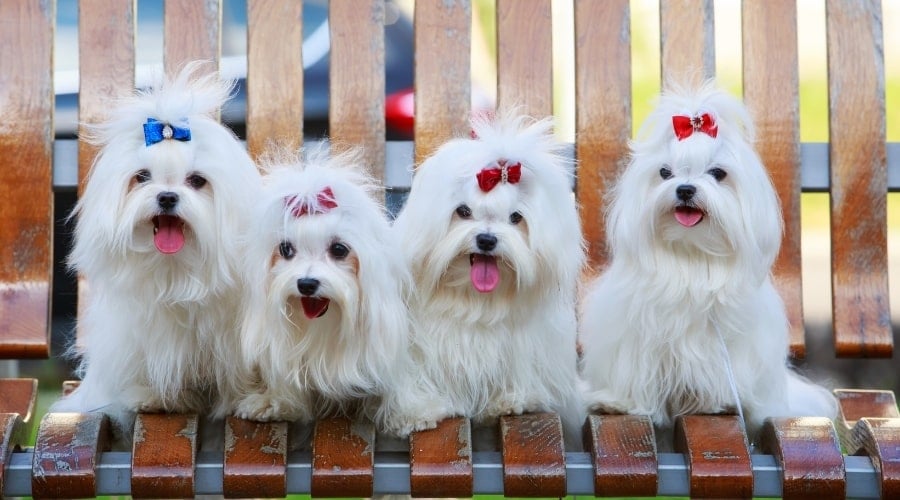
You might not know it from looking at them, but the Maltese breed has been around for a very long time– we’re talking millennia-long! They’re known to be the oldest toy breed originating in Europe, once called “Ye Ancient Dogge of Malta.”
It’s a bit difficult to determine their precise history because of how ancient the breed is. However, you may be surprised to learn that the breed wasn’t originally from the island of Malta, south of Sicily. The breed may have developed there, but there’s greater evidence of them coming from elsewhere. For example, a town in Sicily called Melita exported many beautiful dogs, called Canes Militei, who resembled the modern-day Maltese.
It is thought that Maltese has been around for an astonishing 29 centuries, though some sources suggest even longer. For instance, a figurine of a Maltese, likely a child’s toy, was found to have dated back to 8000 BCE. Later, images of the breed were found on Greek vases.
The Maltese has enjoyed incredible longevity in the annals of history. That much is true. You will be pleased to know that this history is illustrious, decorated wonderfully with tales (or tails?) of Maltese living in the lap of luxury! So beloved was the breed that the Greeks erected tombs for their lapdogs who had passed away.
Maltese were absolute icons of fashion in the Roman Empire, going so far as being called Roman Ladies’ Dogs. They were called this because of women who would use them as accessories peeking out of their sleeves or bosoms. They were so fashionable that eventually, the Roman Emperor Claudius took one in himself.
Potential Extinction
After the fall of the Roman Empire, the Maltese dogs practically went extinct. It was due to the breeding efforts of the Chinese that the breed persisted, despite the troubles of the European Dark Ages. The Chinese exported the more refined Maltese back to Europe, where they enjoyed newfound popularity. The Renaissance poet Ludovico Aristo wrote of Maltese in his epic poem Orlando Furioso, published in 1532. The breed continued finding itself on the laps of royalty.
Mary, Queen of Scots, and Queen Victoria both owned Maltese. In 1839, Queen Victoria’s mother, the Duchess of Kent, commissioned the artist Sir Edwin Landseer to paint a portrait of her Maltese, Quiz, next to her Newfoundland dog. These dogs had longstanding popularity with the aristocracy not just for their beauty, but for the belief that they could cure illness. For hundreds of years, the Maltese were nicknamed “The Comforter” to signify the reverence people had for their soothing presence and companionship.
Maltese were eventually brought across the pond to the US, where they achieved renown in the late 19th Century. The New York Westminster Kennel Club held its first dog show in 1877. The first Maltese ever exhibited was white and listed as a Maltese Lion Dog. In 1888, the AKC recognized the breed and added it to their roster, making it their 42nd breed.
Present Day
In more recent years, the Maltese is still regarded as a beautiful, luxurious dog. They have sat on the laps of kings for centuries, so it comes to no surprise that a different sort of king, Elvis Presley, had one of his own. A little more surprising, though not much so, is that the richest dog in the world was a Maltese.
Trouble was a Maltese who was bequeathed with $12 million following the death of her owner, Leona Helmsley, who was a hotel and real estate mogul. Trouble lived the rest of her years in grandeur, death and kidnapping threats notwithstanding, and passed away in 2011 at 12 years old.
These days, Maltese are still adored all over the world. They have always been great at giving loving, affectionate companionship, and they continue to provide this to their families even today.
Temperament

You’ll soon notice that even from puppyhood, your Maltese will have a very strong personality. They are bold and brave, completely oblivious to how small they actually are. This feistiness can make anyone who meets them laugh. These dogs can’t get enough of this, as they love making their humans happy. However, owners must still take caution.
When they’re not properly trained, you can expect your Maltese to rush headlong into danger. As such, it’s important to teach them when it is appropriate to be protective, as well as when to relax. Maltese who have received proper training are well-suited to be watchdogs. Their keen senses and loud bark will definitely let you know when someone’s at the door!
It’s worth noting that coddling your Maltese may actually lead them to be more aggressive. Maltese who are used to being spoiled by their owners may feel threatened when they aren’t around. They will benefit from thorough socialization with other members of the family, as well as learning to be comfortable spending time by themselves. The latter may be difficult to ask of the highly sociable Maltese! Be careful to avoid separation anxiety, which these dogs are highly prone to.
In The Home
True enough, it takes very little for them to warm up to their other family members when introduced gently. This makes them an excellent family dog, even for families with children, as well as other pets. However, bear in mind that smaller Maltese will do best around older children, as they are very fragile dogs who can get injured if improperly handled. Your Maltese will love to play, so be sure that everyone is careful and safe during playtime!
Since they were bred thousands of years ago to be the perfect lapdog, you can expect that your Maltese will carry this age-old talent with them even into the modern home. The AKC notes the breed to be “among the gentlest mannered of all little dogs.” This gentleness, coupled with their friendly, affectionate nature, allows Maltese to be excellent companions.
They make a great dog for virtually any family, able to give them the attention they need. Moreover, they are perfectly suited to therapy dog work. Just read about Riley the Maltese, a therapy dog at The Emerald Coast Children’s Advocacy Center, who received the AKC’s highest honors as Distinguished Therapy Dog.
Size & Appearance
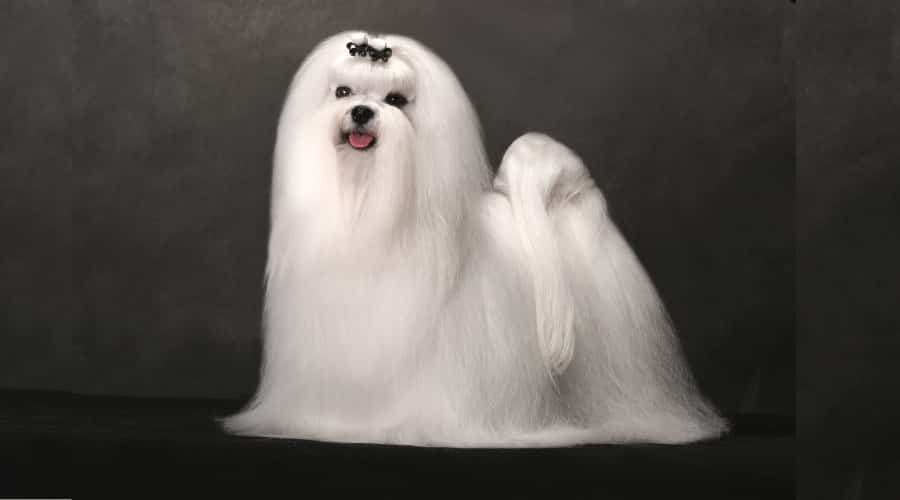
Maltese are categorized as toy dogs. They are very small, as you will immediately notice when meeting one! Both male and female pups average out at around nine inches tall at the shoulder. The AKC lists the breed standard weight to be less than seven pounds, though 4 to 6 pounds is preferred. However, the breed standard may be a bit too light for most Maltese. A healthy weight for an adult dog is around eight pounds, with some being heavier, depending on bone structure.
The Maltese looks very regal and dignified, which makes sense given their illustrious history. They carry their heads high, looking equal parts elegant and adorable. Their ears are low-set, dropping to the sides of their face. Their eyes are dark, round, and equally spaced apart; this gives them a gentle expression. Their nose is almost always black; this is the only color accepted by the AKC.
The Maltese isn’t athletic, but they are capable of lively movement even on such short legs. The AKC describes their gait as “jaunty, smooth, [and] flowing.” Their forelegs are straight; the hindlegs have a considerable amount of strength. These terminate in small, round feet with black toe pads. Maltese carry their tails on their backs, where it drapes over one of their quarters.
Coat and Colors
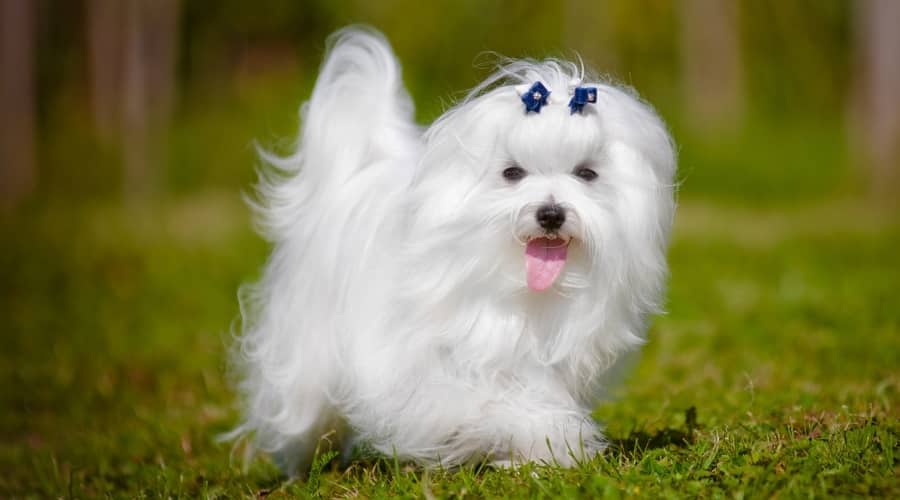
The Maltese is easily recognized by their long, silky white hair. The hair’s straight quality is important. The AKC does not allow hair textures other than flat and straight for the Maltese. Some Maltese look like small soft white cuddly plush toys, just due to their appearance.
Their hair is thick and often made to grow long enough to touch the floor. However, many owners opt to trim their dogs’ hair to make maintenance easier. Their single coats hardly ever shed, making them a great choice for allergy sufferers. However, their lack of a double coat means that they need extra protection during colder weather; consider giving them a sweater when taking them out!
Maltese are known for their immaculate white hair. These days, all purebred Maltese are white, though they did exist in other colors in years past. Notably, the shift to the all-white coloring in the breed came around the turn of the 20th Century. The AKC allows light tan and lemon markings on the ears, though it is not desirable.
Exercise Needs
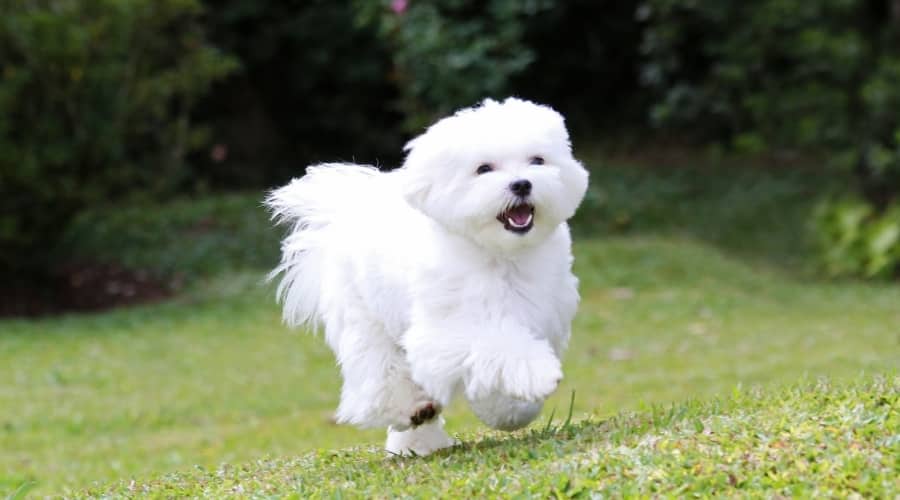
Due to the Maltese’s diminutive size, they will not require as much exercise as larger dogs. However, they are still very active, playful dogs. As such, they will need a good amount of exercise for their physical and mental well-being.
In their puppyhood and adult years, you will need to give them around 30 minutes of exercise a day. This is best split into two sessions a day. Walks are always good, but Maltese will be happy to keep playtime indoors if they can’t head outside. Their size allows them to get the activity they need even in small spaces. Giving them enough exercise and play will help them stay behaved even indoors.
Living Conditions
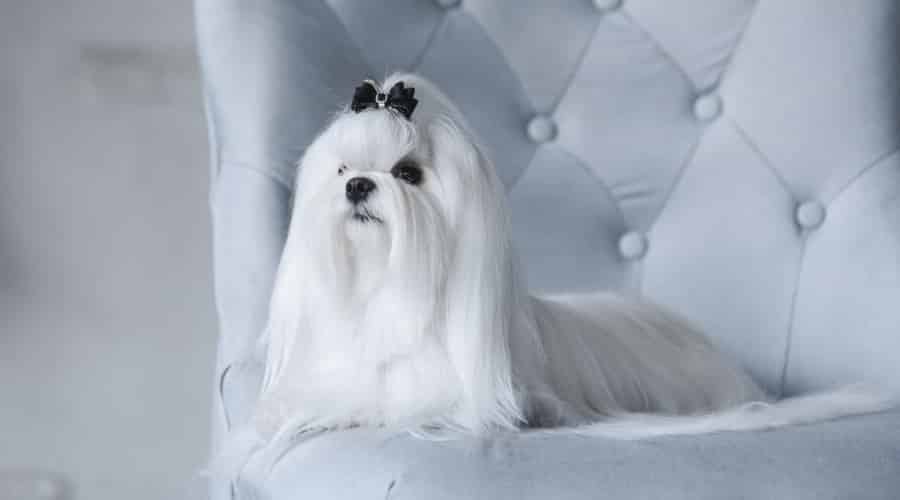
Maltese are great for apartment living since they are small and do not need to take up much space. They will be happy even if they do not have a fenced-in yard, though you will still need to occasionally bring them outside for sunshine and socialization.
As we mentioned previously, these pups do not have a double coat. For this reason, they do not fare well in places with extremely cold weather. It’s also important to note that since they are used to being indoors so much, hot temperatures can also be difficult on them. Take care to give them the care they need during harsher weather. Dress them warmly if they need to be out in the cold for any period. Give them plenty of cool water and keep them indoors on hot days.
Training
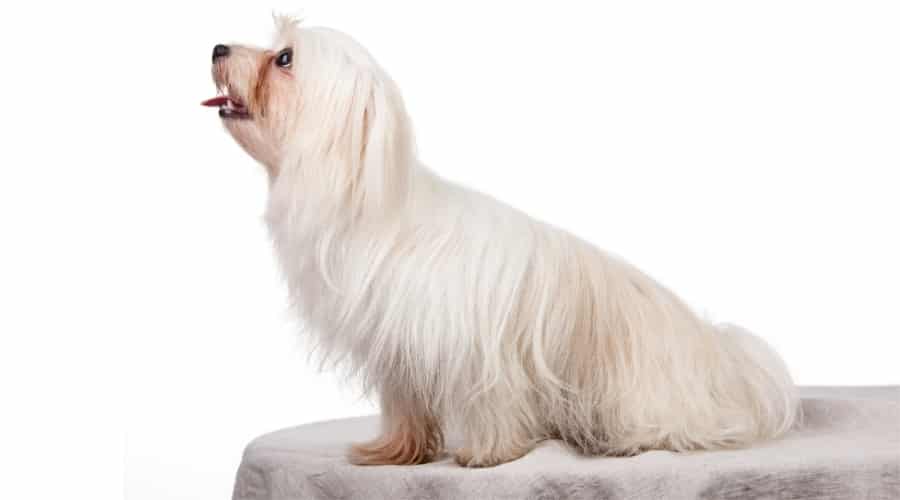
Training your Maltese may come as a bit of a challenge if you can’t get past their effortless charm! Maltese can be spoiled, but it’s not difficult to train them if you start early enough. Getting them to listen to you when giving commands will require a patient, gentle, and sensitive approach. This breed can easily get their feelings hurt, so you need to treat them kindly. Use plenty of positive reinforcement in the way of praise, pets, and treats!
Maltese must be trained in basic obedience as soon as possible. Don’t let their size fool you; they can become very dominant if you don’t rein them in! The breed is prone to what is called Small Dog Syndrome, where they display difficult behavior like aggression, yapping, and destructive behavior. They are also well known to be stubborn, which many dog enthusiasts will say is due to their lack of intelligence.
Socialization is fairly simple for the bubbly, exuberant Maltese. If allowed a safe environment free of overwhelm, they take easily to new animals and people. If allowed to socialize properly, Maltese just want to be everyone’s best friend! Early socialization will prevent many difficult behaviors, including reducing anxiety and suspicion. You should also consider enrolling them in a kindergarten class, to better help them play nice with other dogs.
Health

Maltese are often quite healthy dogs, especially when they come from responsible breeders. Being a smaller breed, they often live quite a bit longer than large-breed dogs. You can expect your Maltese to live anywhere from 12 to 15 years, though some live longer than that.
Despite the Maltese being pretty healthy, like all dogs, they may be genetically predisposed to certain health conditions. Effectively treating your Maltese’s health issues begins long before they pop up. Understanding these issues will allow you to set up a good treatment plan when necessary. Note that not every dog is going to experience these health conditions. However, it’s still important to take them into consideration if you plan to bring this breed into your life.
Patent Ductus Arteriosus
The Maltese is prone to a heart ailment called patent ductus arteriosus. It is one of the most commonly diagnosed congenital heart defects in dogs. In PDA, a small blood vessel in charge of carrying blood to two parts of the heart during gestation fails to close after the puppy is born. The anomaly isn’t quite noticeable early in the Maltese’s life but creates a host of problems. These include an excess of blood carried to the lungs and a strain on the heart.
Monitor your Maltese closely for signs of PDA. You may notice them becoming easily fatigued during exercise or exhibiting shortness of breath, weakness in the hind limbs, or excessive coughing. Have your dog checked for PDA as soon as possible, as it can be a life-threatening condition. It’s often solved by surgically closing the abnormal vessel.
Skin Problems
Your Maltese may also be prone to various skin problems, including sebaceous adenitis. This most commonly occurs in dogs that are 1 to 5 years old. This manifests in dry, scaly skin with hair loss on certain areas of the body, including the top of the head and along the back. Other skin issues may arise, resulting from bacterial infection or allergies to a diet.
Injury
Being such a small size, this breed has a more fragile body than other dogs of larger breeds. Bone fractures may occur from going down the stairs too quickly or jumping off furniture. They may also get concussions from objects falling on them, even soft objects like pillows. Their headstrong nature will most certainly get them into trouble. Needlessly aggressive play with larger dogs may seriously injure your Maltese in no time flat.
Nutrition

Your Maltese will require a well-balanced, nutrient-dense diet to stay healthy all throughout their lives. Since they are so small, they best benefit from high-quality, dry kibble made specifically for small dogs like the Maltese. When they are young, most pups will consume around .5 cups of food per day. As they enter adulthood, that amount gets closer to .75 to 1 cup of food per day, split between two sittings.
Stay away from food with artificial additives; these do nothing for their nutrition, and synthetic dyes may stain your Maltese’s hair! It’s also important to give your Maltese food appropriate for their life stage. This facilitates proper growth in puppyhood, plus good health maintenance in their adult and senior years.
Like other toy breeds, Maltese are prone to hypoglycemia, especially early in life. As puppies, they need regular access to food to keep their blood sugar levels up. Free feeding may be a good idea in the earlier months. However, owners must not rely on this, as it is difficult to monitor their food intake. Eating too much can lead to obesity, which opens the door to many preventable diseases.
Four meals a day is appropriate for very young pups, with portion sizes changing depending on how large the puppy has gotten. Later in life, your Maltese can eat three, or even two meals a day, with the portion sizes determined by their weight and activity level. When in doubt, consult your veterinarian on how much and how often your dog should be eating.
Grooming
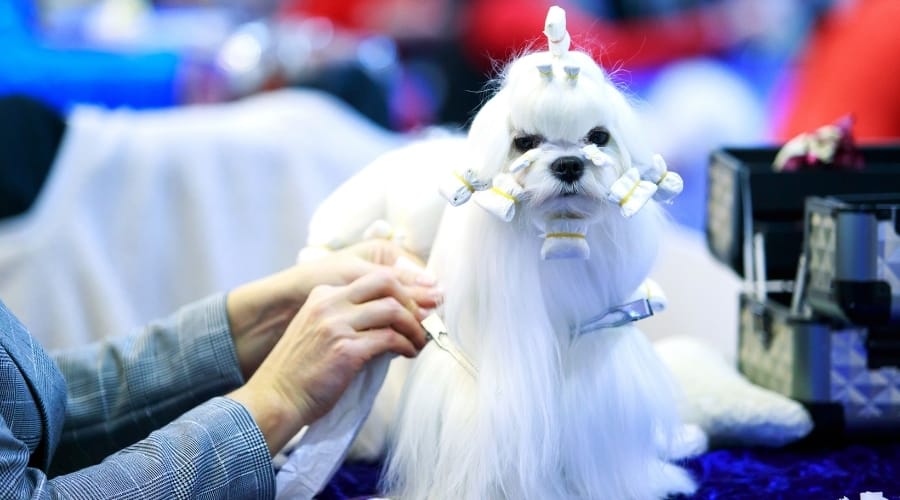
Maltese have very fine, silky hair that needs a lot of attention to keep in good condition. You may opt to bring your Maltese to a professional groomer every week to ensure thorough grooming, though it is still highly feasible to do it yourself. Despite their longer coats, Maltese don’t shed very much.
You can purchase special tools to make grooming them easier. Dog grooming combs with metal tines can help reduce static in the hair and remove tangles more efficiently. Detangling and conditioning sprays are also essential tools to have in your arsenal. A good pair of scissors reserved for grooming your dog will make giving them trims much easier. If your Maltese has any skin conditions, be sure to use the shampoo prescribed by your veterinarian.
Maltese need regular combing and brushing, especially if the coat is long. Combing their coat daily is necessary to prevent tangles and mats. Prevention is imperative to your Maltese’s long-term comfort. Removing mats can be very difficult and painful on your dog and may even result in permanent hair loss if not dealt with effectively. If matting does occur, you can opt to soak the hair in a conditioner or detangling solution before removing the mats by gently picking them apart.
Bathing
Maltese need less bathing than you’d expect, even with their snowy white hair. They will only need to bathe when they’re visibly soiled. It’s important not to bathe them too often, as they can easily develop skin irritation from too much shampooing. Excessive shampooing will also strip the coat of its natural oils and leave it looking dry and brittle.
Given their soft, white hair, Maltese are prone to staining. Food and saliva can cause the hair around the mouth and chin to take on a yellow tint. Tear staining is also common, where the area around the eyes has a pink or brown discoloration. You can use canine facial wipes to prevent staining around the mouth and eyes. If staining has already occurred, consult with your veterinarian on how best to remove these stains.
Nails, Ears & Teeth
Maltese look like clouds and seem to move as effortlessly as them too. Since these dogs are light on their feet, they do not wear down their nails as effectively as larger breeds do. Pay close attention to the length of their nails and trim them when possible. Their nails should be at the level of the outline of their paw.
Be sure to regularly pluck the hairs growing from your Maltese’s ear canal. This helps keep the ears clean and prevents wax buildup. It also wards against inflammation and infection. Wiping the areas around the ear canal with a cotton pad and ear cleaning solution will help remove wax buildup.
Taking care of your Maltese’s teeth will not only keep them looking great but also prevents disease in the long run. Regularly brushing your dog’s teeth with a dog-specific toothbrush and toothpaste will prevent plaque buildup. This also leads to less tartar– the unsightly, hard, brown deposits near the gumline.
Breeders & Puppy Costs
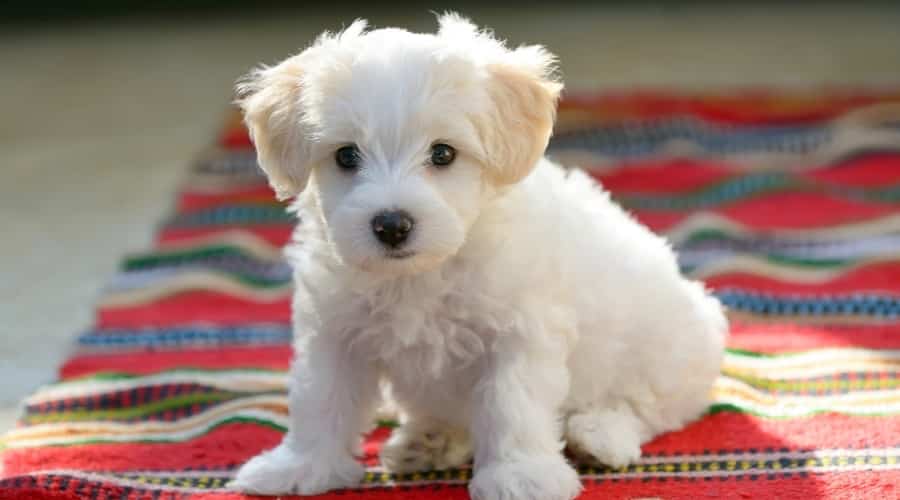
If you are purchasing your puppy from a breeder, your breeder must be reputable and responsible. Unfortunately, there are places like puppy mills where the breeders’ objective is to make as much money as possible, meaning there is very little concern for the animal’s welfare.
In these places, living conditions are inhospitable, with little access to food and clean water. The focus is simply getting the parent dogs to produce as many puppies as possible. You’ll often see these places advertising rare eye and coat colors, which is a bright red flag, as Maltese should only have white coats and dark eyes.
In stark contrast, responsible breeders have a deep love and appreciation for the Maltese breed and treat their puppies and parents with respect. These breeders will be able to show you the living conditions of their dogs, and you’ll see them cozy, clean, and comfortable.
Good breeders are enthusiastic about Maltese and will be able to tell you everything you need to know about them, plus answer any questions you may have. They will also guarantee the puppy’s health with certificates from the vet. Your puppy will have been tested for genetic issues, plus given all their necessary vaccines and deworming.
You can find a good breeder by asking your vet or checking dog enthusiast communities both on and offline. Dog shows are a great place to find leads on responsible breeders. When in doubt, you can also check AKC’s great Maltese breeder referral resource.
In terms of price, Maltese puppies are quite expensive. A pet-quality dog from a reputable source is around $2,000 for a male, while females are around $3,000. Expect to pay more for show-quality dogs, who can range anywhere from $4,000 to $10,000!
Rescues and Shelters
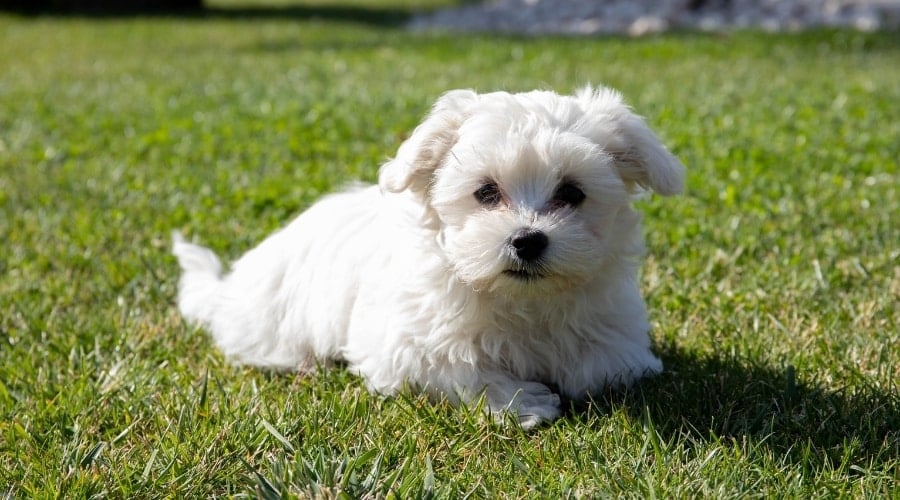
While reputable breeders are always good for bringing a new Maltese into your life, we recommend you check your area for local shelters and rescues first. You are certain to find a wonderful dog in need of a loving home for a fraction of the price you’d pay a breeder! This is an excellent option, not just economically but also because you are saving a dog’s life.
According to the American Society for the Prevention of Cruelty to Animals, 3.3 million dogs enter animal shelters each year, with 670,000 of them being euthanized. Many dogs brought to shelters are older dogs who need special care. Adoption means giving your new dog a better life beyond their imagination.
When checking around for an animal shelter, consider the kind of place you are adopting from. Many shelters treat their animals kindly, resulting in well-adjusted pets who will have little trouble adjusting to home life. However, there are less welcoming shelters where the dogs are in dire need of rescue. Caring for a dog from a shelter like this will be more challenging, but enough patience and love will help bring them out of their proverbial shell.
If you are open to it, consider adopting a mixed-breed Maltese. You’ll end up with a shorter waiting window than only if you are after a purebred, and mixed breed pups will typically be just as healthy and far less expensive. Breed-specific rescues are also well known to take in mutts with a Maltese parent.
As Family Pets
- These pups are small, which means they do best in families with adults.
- They can thrive in both palatial homes and the smallest apartments
- They are outgoing, feisty, and adorable.
- Most Maltese love being the center of attention.
- They will not do well if excessively coddled.
- This can foster anxiety and aggression.
- They must be handled with the utmost care.
- Because of their small stature, they are prone to injury.
- They do not need much exercise outdoors.
- This means they are a good choice for people who are busy.
- They can be prone to separation anxiety.
- Be sure someone can keep an eye on them while you are away.
- They need a lot of training to behave, as they can be overly dominant.
- Most pups will need a lot of grooming, but their beauty is worth it.
Final Thoughts
We hope this article was able to give you a clearer insight into caring for your new Maltese, as well as what makes them so wonderful. They are tiny dogs who will take up a big space in your heart. They are very regal dogs whose aristocratic history paved the way for their larger-than-life personalities, so be sure to treat them with the respect they deserve!
Maltese might take a lot of effort, especially in the grooming process, but the love they have to give is well worth it. If you can meet their needs, this pint-sized pooch is sure to bring you joy that will last both your lifetimes.



